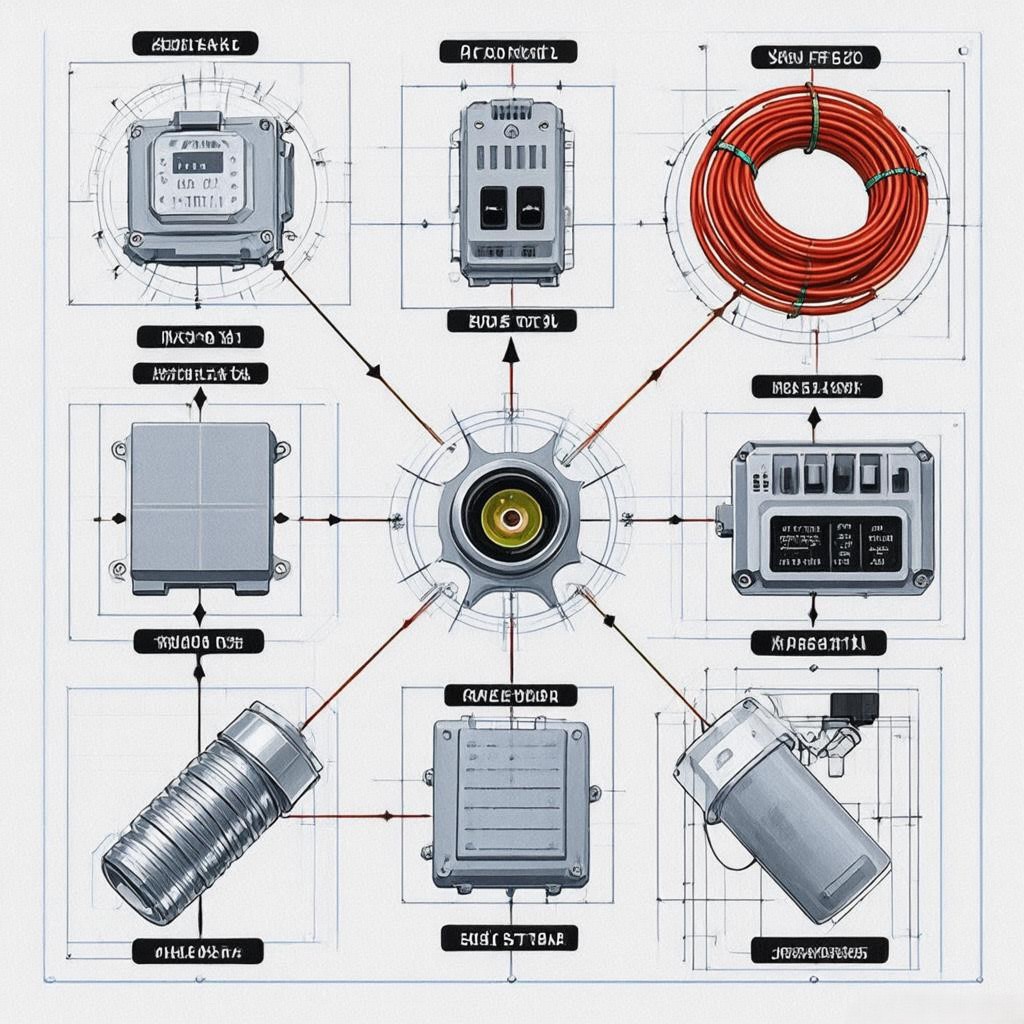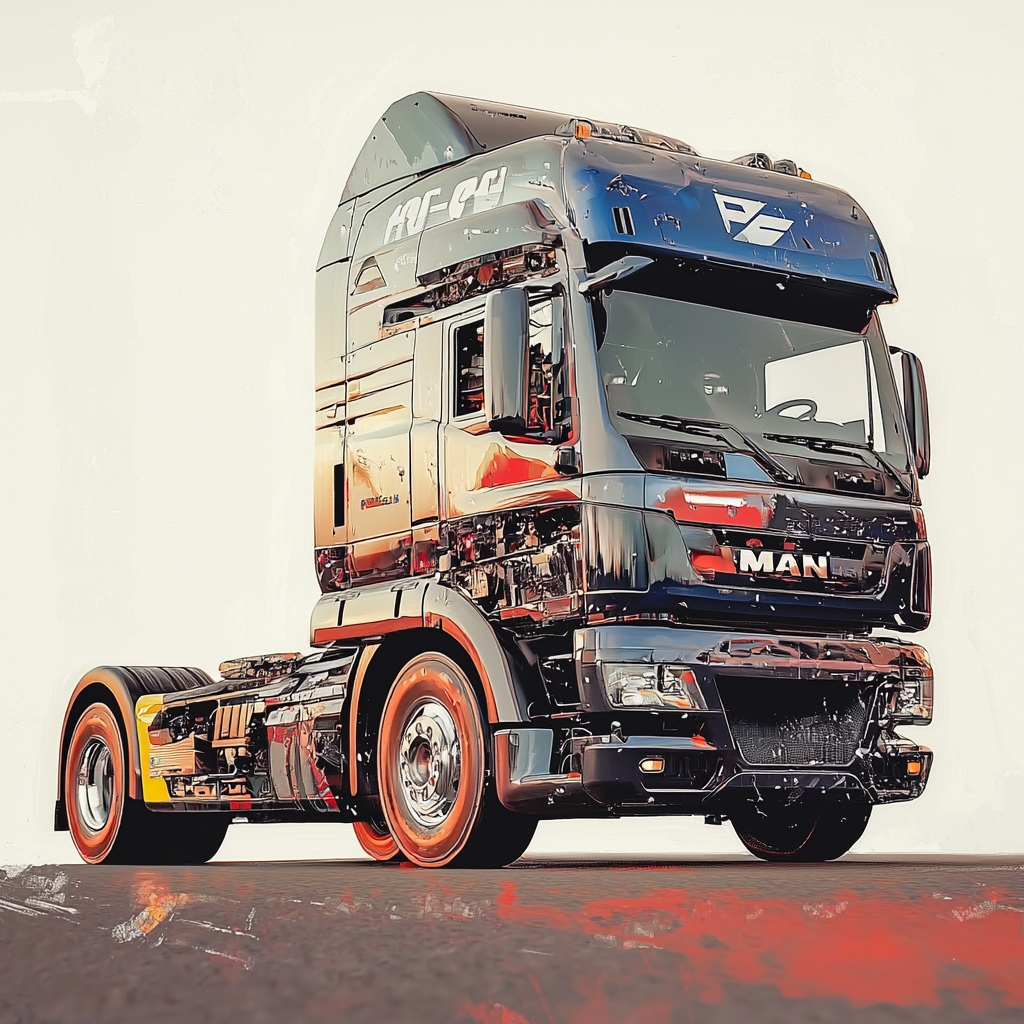Introduction
In the unforgiving environments of mining pits and construction sites, heavy commercial vehicles (HCVs) face extreme loads, uneven terrain, and relentless vibrations. Traditional suspension systems falter under these conditions, but modern air suspension systems—powered by high-capacity air springs, intelligent height control valves, and adaptive ECU algorithms—deliver unmatched stability and durability. This blog dissects the synergy between these components, explores dynamic load-leveling logic, and provides actionable insights for optimizing HCV suspension performance.
Core Components of HCV Air Suspension
1. High-Load Air Springs
- Design: Multi-layered reinforced rubber (6–8 plies) with polyurethane bump stops.
- Capacity: Rated for 8–12 tons per axle (e.g., Continental ContiTech 8000 Series).
- Pressure Range: 6–12 bar, adjustable via ECU for load compensation.
2. Height Control Valves (HCVs)
- Function: Maintain consistent ride height by regulating air spring pressure.
- Mechanism: Mechanical linkage (e.g., WABCO Levelling Valves) or electro-pneumatic (e.g., Haldex ECAS).
- Response Time: 0.5–2 seconds to correct ±5 cm height deviations.
3. ECU and Sensors
- ECU Role: Processes data from accelerometers, load cells, and height sensors to adjust damping and stiffness.
- Key Sensors:
- Load Cells: Measure axle weight (accuracy ±2%).
- LVDT Sensors: Track suspension displacement (0–300 mm range).
- IMU (Inertial Measurement Unit): Detects pitch/roll angles (0.1° resolution).
Dynamic Load-Leveling Logic
HCV suspension ECUs employ advanced algorithms to adapt to shifting loads and terrain.
1. Static Load Compensation
- Pre-Trip Calibration: ECU auto-levels suspension based on initial load (e.g., 40-ton payload).
- Axle Load Distribution: Balances pressure across tandem axles to ±0.3 bar variance.
2. Dynamic Terrain Response
- Mode Selection:
- Mining Mode: Prioritizes stiffness (12 bar) to prevent bottoming out on rocks.
- Highway Mode: Reduces pressure to 8 bar for smoother ride and fuel efficiency.
- Real-Time Adjustments:
- Pitch Control: During braking, front air springs increase pressure by 15% to counter dive.
- Roll Mitigation: In corners, outer air springs stiffen by 20% to reduce body roll.
3. Failure Fallbacks
- Redundant Circuits: If a valve fails, ECU reroutes air supply via secondary channels.
- Manual Override: Drivers can lock suspension height during mechanical failures.
Adaptive Damping Strategies for Extreme Conditions
Mining and construction HCVs require damping systems that handle both high-frequency vibrations (e.g., gravel roads) and low-frequency impacts (e.g., potholes).
1. Semi-Active Dampers
- Tech: Magnetorheological (MR) fluid dampers (e.g., Tenneco DynaRide™).
- Response: Adjust damping force in 10 ms intervals based on ECU commands.
2. ECU-Driven Damping Profiles
| Scenario | Damping Force | Stiffness | Benefit |
|---|---|---|---|
| Loaded Haulage | High | High | Prevents sway and cargo shift. |
| Empty Return | Medium | Low | Reduces driver fatigue on rough roads. |
| Steep Descents | Variable | High | Stabilizes payload during engine braking. |
3. Cross-Axle Synchronization
- Interconnected Air Springs: ECU links front/rear axles to dampen harmonic vibrations (e.g., 5–15 Hz oscillations).
Case Study: Optimizing a Dump Truck Fleet in Australian Iron Ore Mines
Challenge: A fleet of Caterpillar 777F dump trucks experienced premature air spring failures and driver complaints about ride harshness.
Solutions Implemented:
- Upgraded Air Springs: Installed Goodyear G316 series with 10-ply reinforcement.
- ECU Reprogramming: Adjusted damping logic to prioritize low-speed compliance (<30 km/h).
- Predictive Maintenance: Used vibration sensors to preemptively replace worn HCVs.
Results:
- Air spring lifespan increased from 6 to 15 months.
- Driver-reported fatigue incidents dropped by 40%.
Future Trends: AI and Hydrogen-Powered Innovations
1. AI-Powered Suspension
- Terrain Mapping: LiDAR and camera data train ECUs to pre-adjust suspension before encountering obstacles.
- Self-Learning Algorithms: ECUs analyze historical data to optimize damping for specific routes (e.g., recurring potholes).
2. Hydrogen Compatibility
- Lightweight Components: Carbon fiber air springs reduce weight for hydrogen fuel cell trucks (e.g., Hyzon Motors).
- Cold-Weather Logic: ECU preheats suspension fluids in sub-zero conditions using fuel cell waste heat.
3. Autonomous HCV Integration
- Sensor Fusion: Suspension ECUs share data with autonomous driving systems to avoid unstable terrain.
Maintenance and Upgrade Checklist
- Monthly Inspections:
- Check air spring for cracks (use UV dye for micro-leak detection).
- Test HCV response time with a 10 cm height displacement.
- Biannual Tasks:
- Flush pneumatic lines to remove moisture and debris.
- Recalibrate load cells and IMU sensors.
- Upgrade Opportunities:
- Retrofit ECUs with machine learning firmware (e.g., Bosch HCV AI Module).
- Replace mechanical HCVs with electro-pneumatic valves for finer control.
Conclusion
Modern HCV suspension systems are marvels of mechanical and electronic synergy, capable of transforming brutal worksites into manageable environments. By mastering load-leveling valves, adaptive damping, and ECU logic, fleet managers can drastically improve vehicle longevity, driver comfort, and operational safety. As AI and hydrogen technologies mature, the next frontier of HCV suspension promises even greater resilience and intelligence.
Hashtags:
This guide equips engineers and fleet operators with the knowledge to harness cutting-edge suspension technologies—turning rugged terrain from a liability into a competitive advantage. 🚛🏗️




